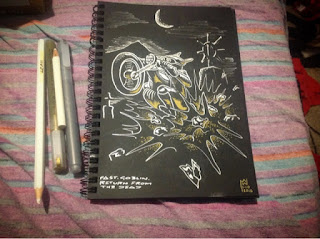Attitudes of Design
If I say that I'm going to "storify" or make a "story-games version" or any existing crunchy mainstream game, what does that mean? Does it mean simply coverting anything an everything in the system to the "Powered by the Apocalypse" engine? That might be a valid way to point in the right direction, but misses a lot of the point. My disdain for games that are powered by the apocalypse is well known in a lot of circles, but it's a bit misrepresented. I'm not sure where I made the comment recently, but I'll repeat a paraphrased version here because the intentions still hold true. It came from two artists that I had conversations with a long time ago. Both artists I had respected for their work, but after a half an hour or more of conversation with them, I really respected them as people too. The first artist was James Gurney, among other things he wrote a book you might have heard of called Dinotopia, and a couple of sequels. The

